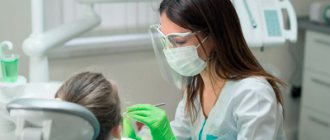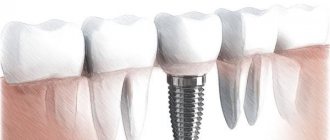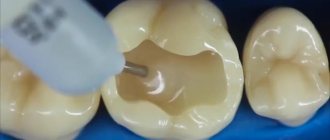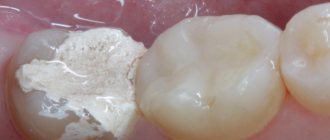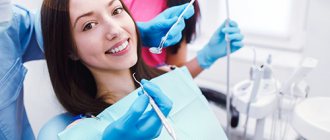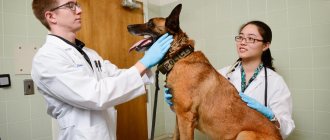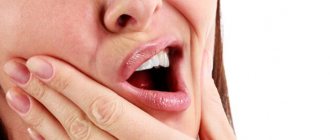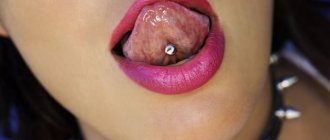Stages of rehabilitation
Carrying out mammoplasty is a fairly serious surgical intervention, performed under general anesthesia, accompanied by tissue incisions and trauma when placing implants, followed by suturing. Therefore, the rehabilitation process takes place in stages, with certain restrictions and prohibitions over several days or weeks. The patient needs to strictly monitor her general well-being, monitor the condition of the postoperative scar and follow all the recommendations of the plastic surgeon. This is necessary so that expectations regarding the desired shape and size of the breast are met, and the recovery process goes according to plan.
In general, the first (postoperative) rehabilitation period lasts up to two months, full recovery occurs within 6-12 months.
Stoma is not a death sentence
In many countries, active work is underway to adapt people with certain characteristics to the social environment. The countries of North America and Europe have been very successful in this. Entire communities of people with stomas (urostomies, colostomies, tracheostomies, etc.) have been created and supported there. People with similar problems communicate and share their experiences and knowledge.
Under the auspices of the UN, since 1993, World Ostomy Day has been celebrated on October 2.
Thanks to new inventions and care products, patients with the consequences of operations can lead a normal, active lifestyle. These include colostomy bags and hygiene products. They are available to a wide range of buyers and are easy and convenient to use. Carrying out operations and ostomy often gives people more than one year of life, the opportunity to enjoy the world and communicate with family, friends, work and play sports. And the fullness of life of a patient with an ostomy largely depends on his optimism and the support of loved ones.
Rehabilitation after mammoplasty by day
The patient spends the first day after the operation in the ward under the supervision of a doctor and nurses, recovering from anesthesia. An increase in temperature is possible as a reaction to incisions and tissue injury, pain. Antipyretics, painkillers, and antibiotics may be recommended to prevent wound infection. After the operation, a semi-lying or sitting position is required; by the end of the day you can stand up and walk. You can drink 3-4 hours after anesthesia, eat food after 5-6 hours.
On the second day, the doctor conducts an examination, removes drainages and makes dressings. In some clinics, the patient is allowed to go home by the end of the second or third day with positive dynamics of recovery.
The patient remains at home for the third or fourth day. Physical activity is prohibited; walking around the house is acceptable.
On the fifth day, a visit to the clinic is required for a follow-up examination by a surgeon and assessment of the recovery process, dressing, and suture treatment.
From 6 to 11 days after surgery, there is a smooth return to normal life with a number of restrictions. Physical activity, sports and heavy lifting are prohibited.
On the 12th day, the doctor conducts an examination again, monitoring the process of restoration of breast tissue and postoperative suture. The next visit during the normal rehabilitation process is planned for the 6th week from the date of surgery.
In the second or third week after the intervention, light housework is allowed; after the doctor’s permission, you can start training after about a month.
Dynamics of changes in the breast during the recovery period
In the first month after surgery, the breasts are quite painful, the tissues swell, and the breast size may be larger than expected. Bruising and small hematomas may appear in the area of the mammary glands. Women are concerned about how long breast swelling lasts after surgery. Maximum swelling will occur in the first week; within 2-3 weeks all these changes will subside. The pain will be maximum in the first days; painkillers are used to eliminate it. Gradually, the intensity of pain decreases by 2-3 weeks, and the need for medications disappears.
In the first two months, the breasts will be somewhat unnaturally raised; by the end of the second month, the implants will completely take root, take their proper place, tissue swelling will go away, and the shape of the breast will become natural. Breast tissue restoration takes place throughout the first year after the intervention. There may be problems with sensitivity of the halos and nipple, burning or itching of the skin. These problems are acceptable and disappear by the end of the first or beginning of the second year.
Why install drainage?
Half of the patients turn to the dentist when they already have gumboil, periostitis, pus in the lump, the socket has dried out, or a cyst cavity has opened. Patients suffer from inflammation, swelling, and pain. They complain of itching in the jaw. Often, the abscess is not able to break through the dense periodontal tissue, so it deepens, causing severe discomfort. In such situations, drainage on the tooth is simply a necessary step! In addition, the tube or tape is installed:
- If the patient has periostitis of the jaw;
- When the last stage of alveolitis is diagnosed;
- In case of adverse consequences of removal of extreme molars;
- If a purulent abscess has formed under the pathological unit;
- When swelling of the mucous membrane appears;
Strips are placed in wounds to deliver medications to infected tissue. In this way, you can wash the roots when the cyst ruptures, introduce antibiotics into the fistula, which speeds up therapy and reduces the risk of infection. Drainage after the removal of a wisdom tooth with complications prevents the wound from healing and allows exudate to be removed from the affected area. The procedure for removing ichor and blood from a wound is very important to prevent the development of sepsis.
The diversion system is installed after the administration of pain medications. A small drainage structure made of soft medical tissue that does not absorb liquids is then inserted into the wound. One end of it is located outside the incision, which does not allow the wound to heal. With an ideally installed system, the patient does not feel a burning sensation, and his condition quickly improves.
What to pay attention to during the rehabilitation period
There are a number of warning signs, the appearance of which is a reason for immediate consultation with a doctor. The first thing that needs to be monitored is the condition of the postoperative wound and the process of scar formation. It is important to notify your doctor immediately if:
- increased pain in the area of the stitches or inside the chest;
- discharge appeared from the nipple area - green, yellowish, bloody, with an odor;
- the breast is swollen, hard to the touch, painful, sharply increased in size;
- parts of the implant are felt, they move, causing discomfort;
- the sutures become wet and fluid or blood oozes out;
- nipples itch and itch, have lost sensitivity;
- breasts are visually different sizes, asymmetrical.
It is important to monitor your general condition if you feel unwell, have a fever, headache, or nausea. Any signs of malaise, discomfort and other complaints are a reason for an immediate visit to the doctor.
What not to do after mammoplasty
After the operation, there are a number of restrictions that are gradually weakened as tissues are restored and postoperative scars heal.
You should not drink liquids for the first 3 hours after surgery (vomiting may occur), and you should not eat food for the first 5-6 hours.
For 4-5 days you should not shower your entire body (you can wash your lower part, wipe your hands, neck, and face with a damp towel).
In the first week, you should not lie down, sleep on your stomach at night, raise your arms above shoulder level, lift more than 1 kg of weight, make sudden movements with your arms, or bend forward and down.
Until the end of 2 weeks after the operation, you cannot drive a car or have sex. Until the end of the first year of rehabilitation after mammoplasty, pregnancy is undesirable - you should take care of contraception.
For a month after the operation, physical activity, sports and training are prohibited. Exercises with push-ups and stretching of the pectoral muscles are carried out no earlier than 24-25 weeks after surgery.
During the entire rehabilitation period, you should avoid sudden weight fluctuations, serious stress and nervous strain, and anxiety.
In the first three months, you should stop drinking alcohol and smoking, limit spicy, salty, spiced, fatty and fried foods. It is important to control fluid intake to avoid swelling.
For at least 6 months, you should avoid visiting saunas, steam baths, solariums, prolonged exposure to the sun, and taking hot baths.
Drainage after surgery
In most cases, during the operation, the surgeon leaves a drainage tube in the pelvic cavity (in the operation area). Drainage located in the bed of the prostate gland is necessary for the drainage of excess fluid (lymph) and blood remaining or released in the wound. In the first few days, ichor will be released through the drainage; as a rule, by the third or fourth day the drainage is removed.
Urinary catheter after surgery for prostate cancer
A urinary catheter drains urine from the bladder, preventing it from leaking through the urethra, allowing it to heal quickly after prostate cancer surgery. A urinary catheter is attached to a drainage bag that collects urine from the bladder. The catheter from the bladder is removed 8-10 days after surgery. Sometimes it may take longer for the urethra to heal (usually after radiation therapy) before your doctor tells you that the catheter can be removed. In the first few days after surgery, the catheter may cause bladder spasms, discomfort in the lower abdomen, and a feeling of needing to urinate. Over time, the discomfort will decrease. As a rule, after surgery, we discharge the patient home only when the urethral catheter is removed. However, if the patient wishes, he can be discharged earlier with a urethral catheter. In this case, when you are discharged, your doctor will explain to you how to care for your urinary catheter and drainage bag. The top of the head of the penis, where the urinary catheter comes out, must be treated with petroleum jelly at least once a day to prevent injuries and microcracks.
Earlier removal of the catheter may lead to a number of complications, including urinary incontinence or, conversely, acute urinary retention.
You can remove the catheter at the clinic at your place of residence, but it is better to seek help from your operating surgeon. Removing the catheter is a painless procedure that takes only a few seconds.
After the urinary catheter is removed, it takes some time for your bladder to “remember” how to function properly. Over time, the function of the bladder muscles and control over the act of urination will be restored. By the end of the first month after surgery, 60% of men regain full control over urination. By the third month after surgery for prostate cancer, the function of the bladder and pelvic floor muscles is restored in 90% of men, and after 6 months - in 92-95%.
Exercises aimed at strengthening the pelvic floor muscles, namely the Kegel exercise, will help you regain control over the act of urination more quickly.
Kegel exercise to strengthen the pelvic floor muscles
They consist of three parts (slow compression, contraction and extrusion):
The first stage is slow contraction: while performing this exercise, you need to slowly tense your pelvic floor muscles, as you usually do, for example, to stop urination or defecation. Hold the tension for 3-5 seconds. Relax and repeat the exercise after 10 seconds.
The second stage is contractions: it is necessary to quickly tense and relax the muscles of the perineum.
The third stage is pushing out: when performing the exercise, you need to push as if urinating or defecating.
The exercise of each stage is performed 5-10 times, and the entire complex – 3-5 times a day. Every week, increase the number of exercises performed by 5 until the number of repetitions of each exercise reaches 30-40 times.
Pain syndrome after surgery
After surgery for prostate cancer, you may experience pain or discomfort in the surgical area. To combat pain in a hospital setting, both narcotic and non-narcotic analgesics are used. If you had an epidural with a catheter placed during anesthesia, it can be used for prolonged postoperative pain relief.
In case of moderate pain and discomfort at home, you can use non-steroidal anti-inflammatory drugs such as ibuprofen, paracetamol, etc. The duration of pain on average can last up to 14-20 days after surgery.
Important points during the rehabilitation period
In the first days after mammoplasty and subsequent months, proper breast care in the area of postoperative scars is important. This is important for their fastest healing without severe deformations. In the first days, the doctor treats the area of the sutures and changes the bandages; they are prohibited from being removed or wet. If absorbable threads were used, they are not removed; the resulting crust over the seam cannot be torn off until it completely falls off. To stimulate scar healing, your doctor may prescribe special creams. They make the seams less noticeable.
During the first 2-3 months (or longer), you need to wear a compression bra after mammoplasty. For a month they wear it without taking it off, even at night; from the second month it is permissible to take off the underwear at night. This is important so that the implants take their place and take root well, there are no problems with the skin and ligaments, muscles, and blood flow and lymph drainage are normalized.
On the recommendation of a doctor, therapeutic breast massage may be prescribed. Initially, it is carried out by a massage therapist, teaching the woman, then she performs it independently, in the morning. In the first three weeks, movements should be as light as possible, then lymphatic drainage massage techniques are used.
Ostomy care
It is quite possible for the patient to take care of the stoma at home. The ostomy hole is not a wound and does not require sterile conditions or sterile gloves.
Before changing the colostomy bag, check that everything is at hand. You will need:
- paper napkins, soft fabric non-sterile napkin;
- plastic bag for used colostomy bag;
- mirror (if the patient provides care himself);
- scissors for a hole in the plate;
- template (stencil) for determining the size of the stoma;
- soap;
- if necessary - non-sterile wipes, barrier paste and skin treatment products.
It is rational to care for your stoma in the evening, before bed. The colostomy bag should not be changed immediately after eating, as intensive separation of intestinal contents may begin.
The procedure for treating a stoma and replacing a colostomy bag:
- After washing your hands with soap, remove the used colostomy bag into a prepared bag and close it.
- Clean the stoma with a damp soft cloth. Wash your hands again.
- After which you can begin to cleanse the skin. It is enough to blot it with a soft towel. And, if possible, leave to dry for a few minutes. If there is a need to cut hair with scissors. Do not use razors or depilatory products as they cause irritation.
- Place the stencil on the stoma and trace the desired diameter with a pen.
- Cut a hole of the proper size in the adhesive sheet.
- If ulcers, wounds, or bleeding occur on the skin or intestinal mucosa, you should see your doctor. Remaining glue from the plate can be carefully wiped off with a napkin or use a special hypoallergenic leather cleaner.
- If there are unevenness or changes in skin texture, apply barrier paste around the stoma for better sealing and stick on a retainer plate.
- The choice of position of the bag for collecting intestinal contents depends on the patient’s activity - if he is constantly in bed, the bag should be oriented across the abdomen. In all other cases, the bottom of the bag should point down.
Important! To treat the skin, you cannot use products based on alcohol, ether, or aggressive antiseptic solutions.
An easy-to-care stoma is one that protrudes above the surface of the skin. In this case, it is easy to achieve tight coverage of the intestinal stump and a tight connection.
If the stoma is located in a recess and retracted, then so-called correctors are used - convex plates. They cover the intestinal stump using a tight flange. The concave shape of the products makes it possible to conveniently attach colostomy bags. For greater reliability, the plates are attached to the torso using a wide elastic band.
Photo: Convex plate, surface adjacent to the skin



